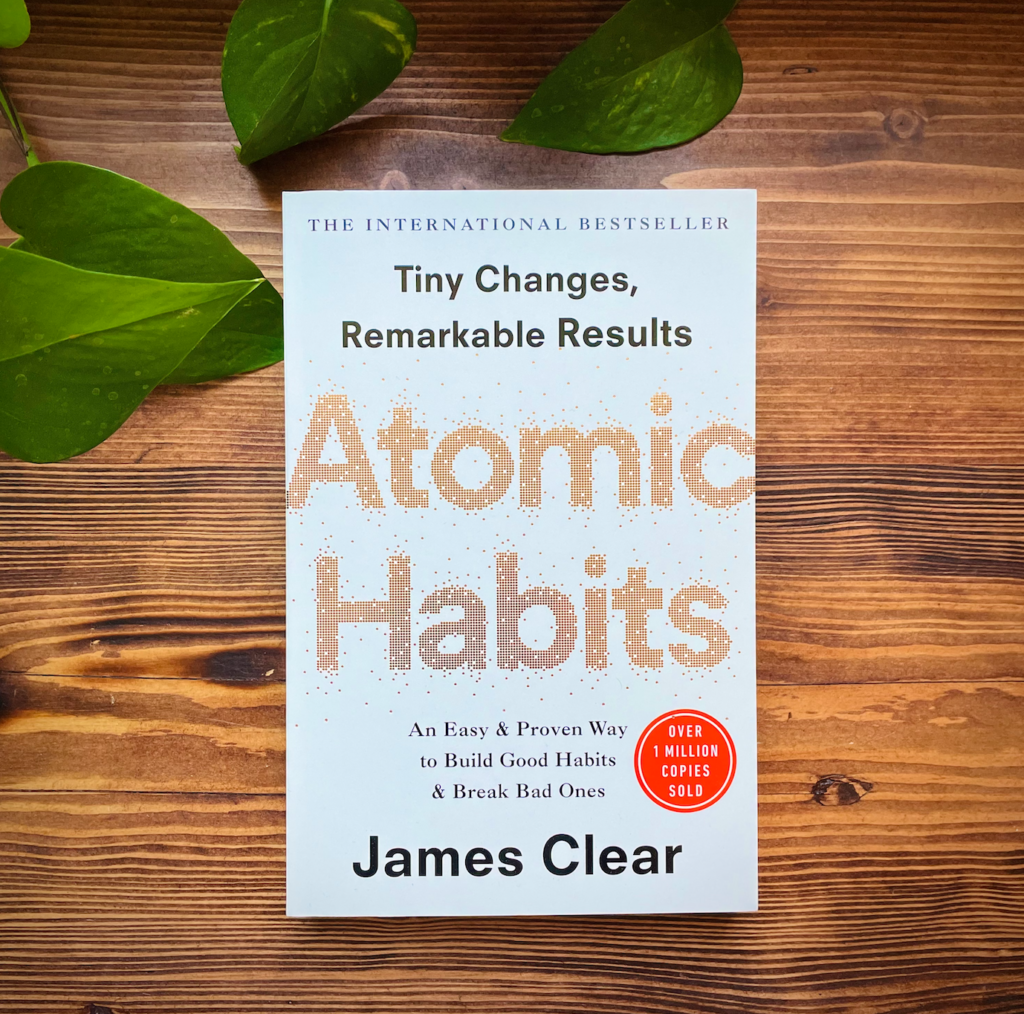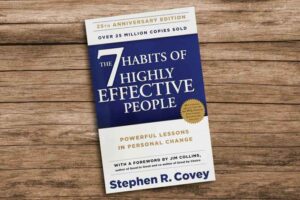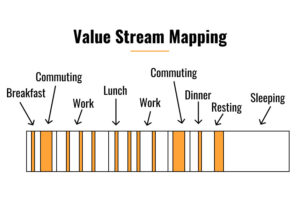Download this executive summary in PDF: Atomic Habits by James Clear
Chapter 1 – The Surprising Power of Atomic Habits
- Small improvements are not noticeable but many small improvements of 1% will have a huge positive impact in the long run.
- Habits are the compound interest of self-improvement.

- You should be far more concerned with your current trajectory than with your current results.
- Overnight success is the result of the accumulation of small actions.
- Goals are about the results you want to achieve. Systems are about the processes that lead to those results. Focus on improving your system and the results will take care of themselves.
- You do not rise to the level of your goals. You fall to the level of your systems.
- To get rid of your bad habits, you need to fix your system.
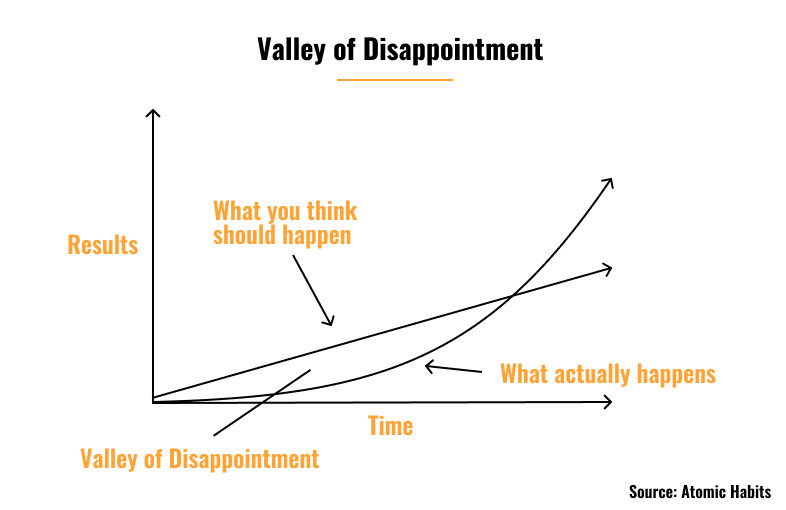
Chapter 2 – How Your Habits Shape Your Identity (and Vice Versa)
- Outcomes are about what you get. Processes are about what you do. Identity is about what you believe. To build long-lasting habits, change your beliefs first.
- By changing your identity, your behaviors will align with your beliefs.
When someone says “I want to quit smoking”, in his identity, he is still a smoker. If he says “I am not a smoker”, it is much easier for him to quit smoking because it is his identity. - Every action you take is a vote for the type of person you wish to become.
- Your identity shapes your habits, and your habits strengthen your identity.

Chapter 3 – How to Build Better Habits in 4 Simple Steps
- A habit is an automatic behavior that frees your mind for a new task. You have an automatic process to solve a repeated problem.
- Habits do not restrict freedom. They create it. With habits, you have more free-thinking and creativity for new tasks.
- The process of building a habit can be divided into four simple steps: cue, craving, response, and reward.
- The cue: it is a signal that triggers your brain to crave a reward
- The craving: it is the motivational force that will push you to act
- The response: it is the habit, it should be doable to become repetitive.
- The reward: it is the reward that relieves you from your craving and teaches which habits are useful.
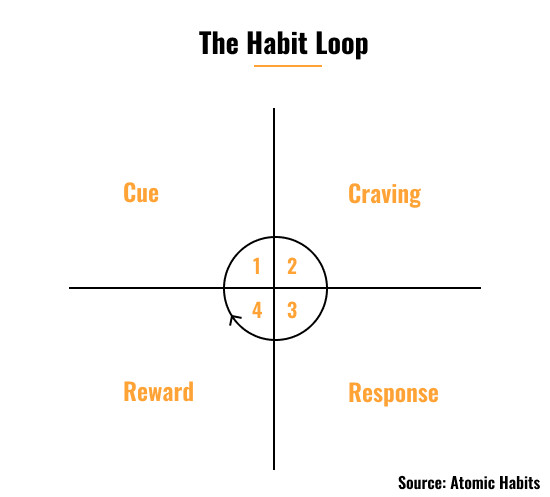
How to Create a Good Habit:
- The 1st law (Cue): Make it obvious.
- The 2nd law (Craving): Make it attractive.
- The 3rd law (Response): Make it easy.
- The 4th law (Reward): Make it satisfying.
How to Break a Bad Habit:
- Inversion of the 1st law (Cue): Make it invisible.
- Inversion of the 2nd law (Craving): Make it unattractive.
- Inversion of the 3rd law (Response): Make it difficult.
- Inversion of the 4th law (Reward): Make it unsatisfying.
The 1st Law (Cue): Make It Obvious
Chapter 4 – The Man Who Didn’t Look Right
- Our brain can detect cues and form new habits without us being aware of the process.
- Being aware of our habits is the first step before building new ones.
- The Habits Scorecard: list your habits then add a “+” for good habits, a “-“ for bad habits, “=“ for neutral habits. You will build awareness of your habits.
Chapter 5 – The Best Way to Start a New Habit
- Broadly speaking, the format for creating an implementation intention is:
When situation X arises, I will perform response Y.
Ex: I will exercise on [DAY] at [TIME] in [PLACE]. - Being specific gives you clarity and removes distractions.
- The Diderot Effect: obtaining a new possession often creates a spiral of consumption that leads to additional purchases.
- Build new habits by stacking them on old habits.
- The habit stacking formula is:
After [CURRENT HABIT], I will [NEW HABIT].
Ex: After brushing my teeth, I will do 10 push-ups in my bedroom.
Chapter 6 – Motivation is Overrated; Environment Often Matters More
- Behavior is a function of the person in their environment.
- In a supermarket, customers have tendencies to buy what they can see.
- Make the cues visible in your environment to trigger the habits you want to build.
- Context matters, have a specific habit per environment.
Ex: The bed is for sleeping, not for working. When you are on your bed, you will fall asleep faster.
Chapter 7 – The Secret to Self-Control
- Remove the cues of bad habits to avoid temptation.
- A habit can be broken but hardly forgotten.
The 2nd Law: Make It Attractive
Chapter 8 – How to Make a Habit Irresistible
- The more attractive an opportunity is, the more likely it is to become habit-forming.
- We are surrounded by cues that stimulate our Palaeolithic instinct.
- The food industry manipulates our instinct by adding sugar, salt, and fat to the foods for us to crave them.
- Dopamine is released not only when you experience pleasure, but also when you anticipate it.
- Dopamine motivates us to act.
- The habit stacking + temptation bundling formula is:
- After [CURRENT HABIT], I will [HABIT I NEED].
- 2. After [HABIT I NEED], I will [HABIT I WANT].
- Ex: After I get back from my lunch break, I will call three potential clients (need).
After I call three potential clients, I will check Facebook (want).
Chapter 9 – The Role of Family & Friends in Shaping Your Habits
- Our first habits come from imitation.
- We imitate to belong to the tribe with its social norms.
- We tend to imitate the habits of three social groups: the close (family and friends), the many (the tribe), and the powerful (those with status and prestige).
- One of the most effective things you can do to build better habits is to join a culture where (1) your desired behavior is the normal behavior and (2) you already have something in common with the group.
- As part of a group, you adopt the identity and habits of the group.
- It is more attractive to adopt the habits of the tribe.
- We’d rather be wrong with the crowd than be right by ourselves.
- The Powerful have attractive habits because they earn respect, status, and approval.
Chapter 10 – How to Find and Fix the Causes of Your Bad Habits
- Any habits (including the bad ones) come from cravings.
- Cravings have origins such as: finding love and reproduction, social acceptance, achieving status, reducing uncertainty, connecting with others, obtain food.
- Our current habits are the methods we learned to satisfy our cravings.
- Habits are positive when we associate them with positive feelings.
- Build hard habits by shifting your perspective by highlighting the benefits.
The 3rd Law: Make It Easy
Chapter 11 – Walk Slowly, but Never Backward
- Habits form based on frequency, not time. The more you do, the faster you build the habit.
- The most effective form of learning is practice, not planning.
- Your brain actually “grows” like a muscle when you repeat a habit.
- Aim for action (writing an article), not motion (planning about writing an article).
Chapter 12 – The Law of Least Effort
- You do not want a habit, you want the outcome the habit delivers.
- Remove the frictions, and create an environment that makes your habits easy.
Prime your environment for immediate use. - Conversely, add frictions to your bad habits to make them difficult.
Chapter 13 – How to Stop Procrastinating by Using the Two-Minute Rule
- Decisive moments set your options that lead to the habits.
- Master decisive moments with the two-minute rule: when you start a new habit, it should take less than two minutes to do.
- “Read before bed each night” becomes “read one page.”
- After having the habit of reading one page, you will naturally read more than one page.
- By showing each day, you are casting votes for your new identity (i am a reader).
Chapter 14 – How to Make Good Habits Inevitable and Bad Habits Impossible
- Commitment device: anticipate the temptations by making them impractical.
- Use technology to your advantage to remove the temptations.
- Onetime action that locks in good habits (ex: enroll in an automatic savings plan to save money).
The 4th Law: Make It Satisfying
Chapter 15 – The Cardinal Rule of Behaviour Change
- What is immediately rewarded is repeated. What is immediately punished is avoided.
- The human brain evolved to prioritize immediate rewards over delayed gratifications.
- Add a small, immediate reward to good behaviors.
- Ex: when you wash your hands with soap, the good smell is satisfying.
Chapter 16 – How to Stick with Good Habits Every Day
- Use visual measurement to track your progress.
- Make it automatic when possible.
- After [CURRENT HABIT], I will [TRACK MY HABIT].
- Avoid repeating the mistake, try to keep the habit, and come back on track as fast as possible.
Goodhart’s law: when a measure becomes a target, it ceases to be a good measure.
Chapter 17 – How an Accountability Partner Can Change Everything
- Inversion of the 4th law: Make it unsatisfying.
- Set up a habit contract: each time you fail to maintain your good habit, you get a penalty.
- Find an accountability partner: knowing that someone is watching you is motivating.
Advanced Tactics: How to Go From Being Merely Good to Being Truly Excellent
Chapter 18 – The Truth About Talent
- Genes can predispose and give you an advantage/disadvantage.
- Genes influence also your personality traits (openness, consciousness, extroversion, agreeableness, neuroticism).
- Build habits that work for your personality.
- Explore and test some fields, and select the ones that satisfy you.
You can also build your field or specialize to dominate. - Even if genes favor you, you still need to put in the work.
Chapter 19 – The Goldilocks Rule: How to Stay Motivated in Life and Work
- Goldilocks Rule: Humans experience peak motivation when working on tasks right on the edge of their current abilities.
- To become excellent, you have to fall in love with boredom.
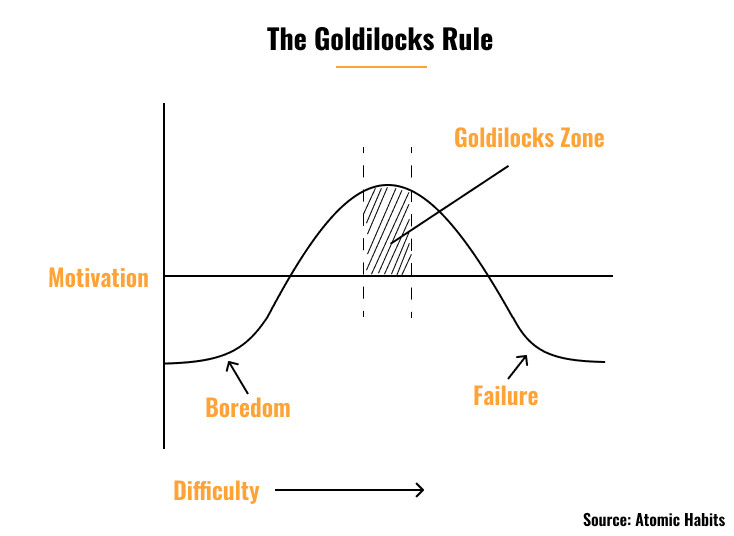
Chapter 20 – The Downside of Creating Good Habits
- Once a skill is mastered, there can be a decline in performance over time.
- Habits + Deliberate Practice = Mastery
- Review your habits and make adjustments to avoid complacency.
- Stay flexible in your identity.
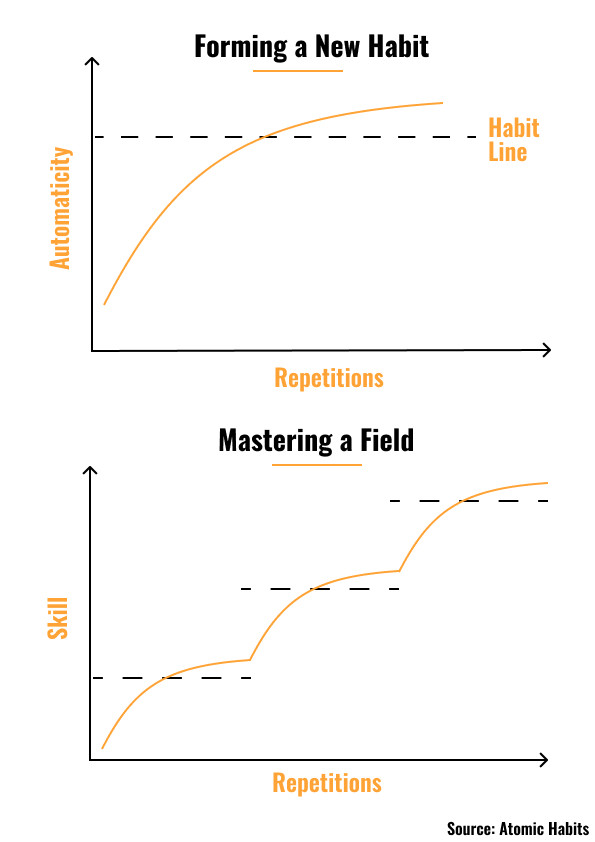
Download this executive summary in PDF: Atomic Habits by James Clear

